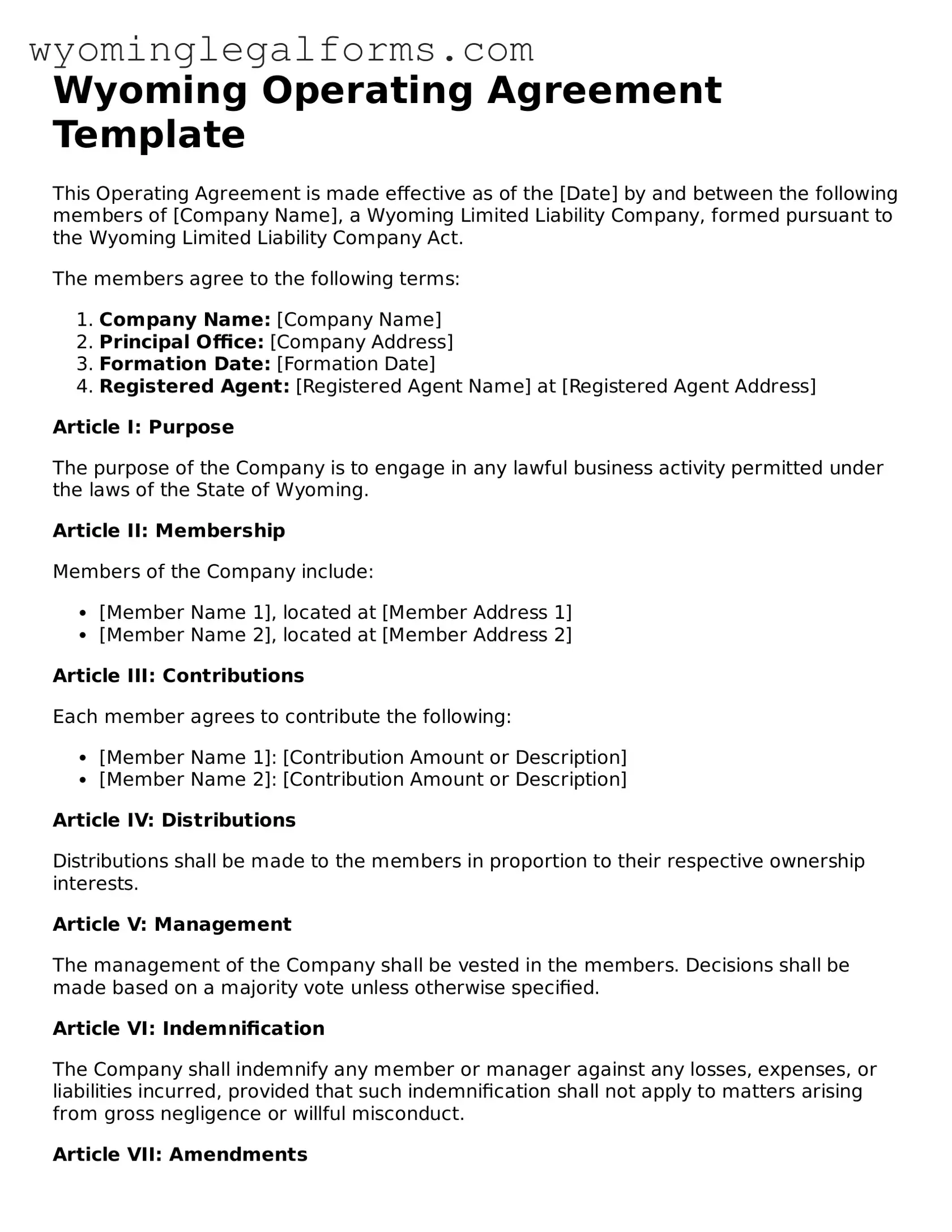Wyoming Operating Agreement Template
This Operating Agreement is made effective as of the [Date] by and between the following members of [Company Name], a Wyoming Limited Liability Company, formed pursuant to the Wyoming Limited Liability Company Act.
The members agree to the following terms:
- Company Name: [Company Name]
- Principal Office: [Company Address]
- Formation Date: [Formation Date]
- Registered Agent: [Registered Agent Name] at [Registered Agent Address]
Article I: Purpose
The purpose of the Company is to engage in any lawful business activity permitted under the laws of the State of Wyoming.
Article II: Membership
Members of the Company include:
- [Member Name 1], located at [Member Address 1]
- [Member Name 2], located at [Member Address 2]
Article III: Contributions
Each member agrees to contribute the following:
- [Member Name 1]: [Contribution Amount or Description]
- [Member Name 2]: [Contribution Amount or Description]
Article IV: Distributions
Distributions shall be made to the members in proportion to their respective ownership interests.
Article V: Management
The management of the Company shall be vested in the members. Decisions shall be made based on a majority vote unless otherwise specified.
Article VI: Indemnification
The Company shall indemnify any member or manager against any losses, expenses, or liabilities incurred, provided that such indemnification shall not apply to matters arising from gross negligence or willful misconduct.
Article VII: Amendments
This Operating Agreement may be amended only by a written agreement signed by all members.
Article VIII: Governing Law
This Operating Agreement shall be governed by and construed in accordance with the laws of the State of Wyoming.
IN WITNESS WHEREOF, the undersigned have executed this Operating Agreement as of the date first above written.
______________________________
[Member Name 1]
______________________________
[Member Name 2]
